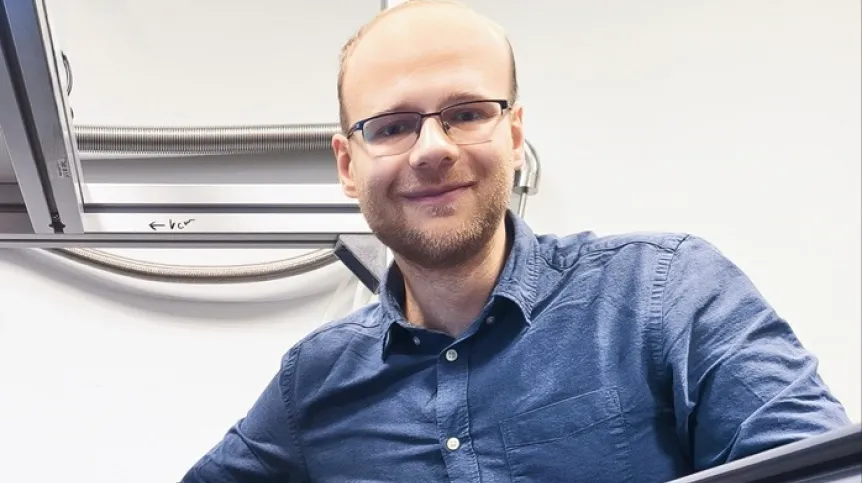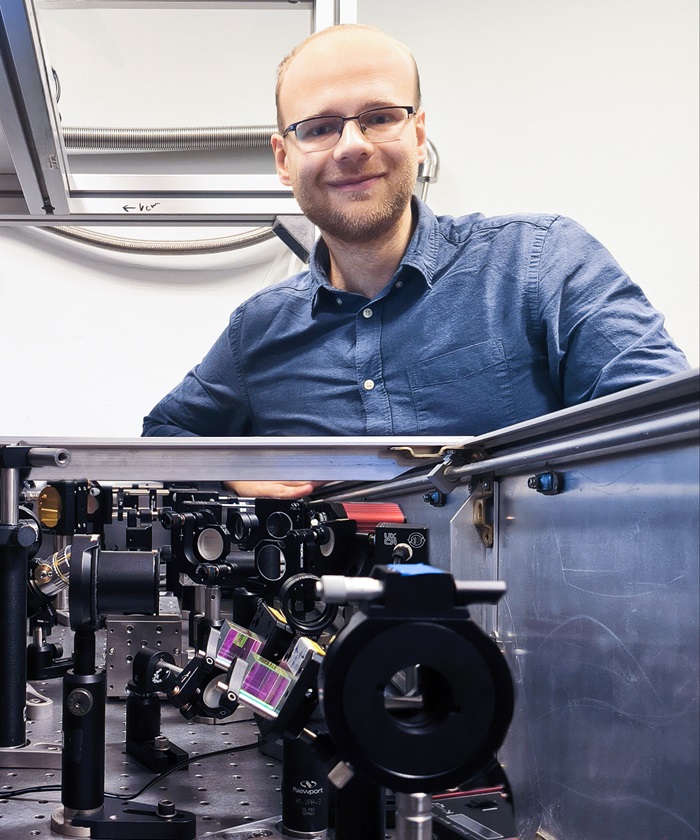
Physicists from the University of Białystok have broken their own records in the speed and efficiency of data writing. The researchers improved the method of ultrafast magnetic writing using laser pulses and discovered a new write-back mechanism. They reported the results in Nature Communications.
According to the head of the research team, Professor Andrzej Stupakiewicz, the progress of the work is extremely effective and promising in terms of the development of new methods for recording information.
In recent years, researchers at the University of Białystok’s Faculty of Physics have discovered many new mechanisms explaining the interactions of laser radiation with matter on the ultra-short scale of femtoseconds (a femtosecond is equal to one quadrillionth of a second). Research has proven that permanent photomagnetic writing in dielectric layers of garnets (synthetic stones imitating diamonds) is possible using linearly polarized femtosecond laser pulses. Changing the polarization of the pulse leads to a reversible switching of the magnetization direction, writing or deleting the binary states '0' and '1', respectively.
'In subsequent research, we demonstrated how magnetic bits can be written even more efficiently than before, as well as how the stored information can be deleted, without changing the direction of light polarization', says Professor Stupakiewicz.
This is the topic of the latest publication in Nature Communications. In their research, the authors used new layers of garnets doped with cobalt. As they describe, in these layers the directions of magnetization have been energetically balanced. Such symmetry makes it possible to obtain the so-called bistable state, as in an ordinary electric toggle switch.
The first pulse from the laser (like the first click of a switch lighting a bulb) switches the direction of magnetization, writing the state '1'. However, another identical pulse switches back to the original state '0' (similar to the second click of the switch, which turns off the light bulb). Thus, cyclic switching of the magnetization direction is achieved without changing the polarization of light, in a repeatable and reversible manner.
Research shows that the dissipation and switching time are several times smaller than with the previous magnetic recording methods. Moreover, the process of writing-erasing bits can be repeated indefinitely. According to the authors of the publication, the new toggle switching mechanism means that bits can be written at a frequency reaching 50 GHz and it does not require an additional circuit that changes the polarization of light.

The first author of the publication in Nature Communications is one of the first doctoral candidates and graduates of the Doctoral School of Exact and Natural Sciences of the University of Bialystok, Dr. Tomasz Zalewski. In March 2024, he defended with honours his doctoral dissertation entitled 'Ultrafast coherent photo-magnetic switching in ferrimagnetic garnets', written under the supervision of Professor Stupakiewicz.
Zalewski built a measurement station that enabled imaging of magnetization states during photomagnetic writing. It recorded a series of images, each of which was obtained using only one laser pulse lasting 50 femtoseconds. Thanks to this, he gained insight into the dynamics of magnetization movement.
'We have demonstrated a record-wide temperature range, from -100 to +100 degrees Celsius, in which magnetic writing is stable. Moreover, we have achieved record writing parameters, improving its efficiency several times compared to other currently known data writing mechanisms', says Dr. Zalewski.
Dr. Zalewski is a graduate of the Warsaw University of Technology. He was employed at the Department of Magnetic Physics, Faculty of Physics at the University of Bialystok as a result of a competition, as part of the TEAM project financed by the Foundation for Polish Science (with European funds, the Smart Growth Operational Programme). After defending his doctoral dissertation, he spent several years working as a postdoctoral researcher at Radboud University in the Netherlands.
PAP - Science in Poland
kol/ zan/ kap/
tr. RL













